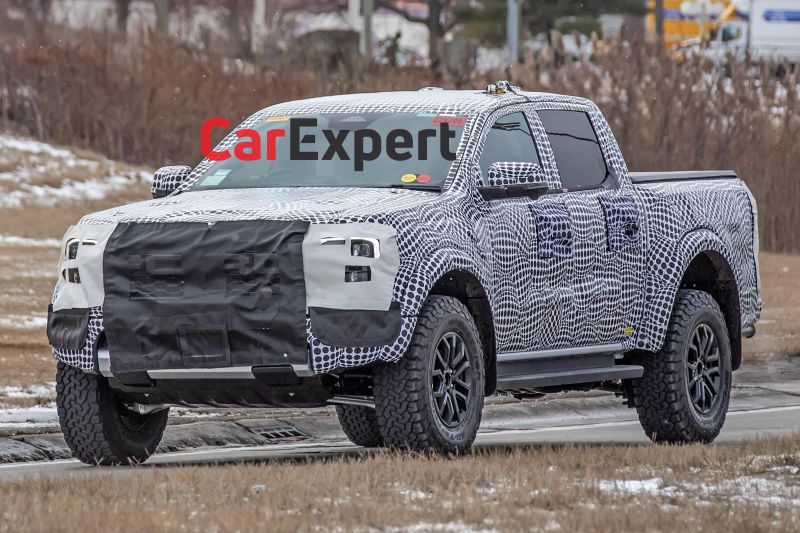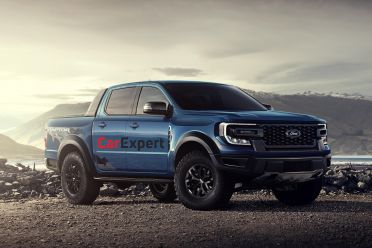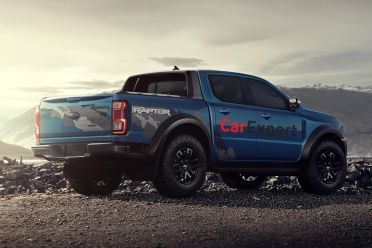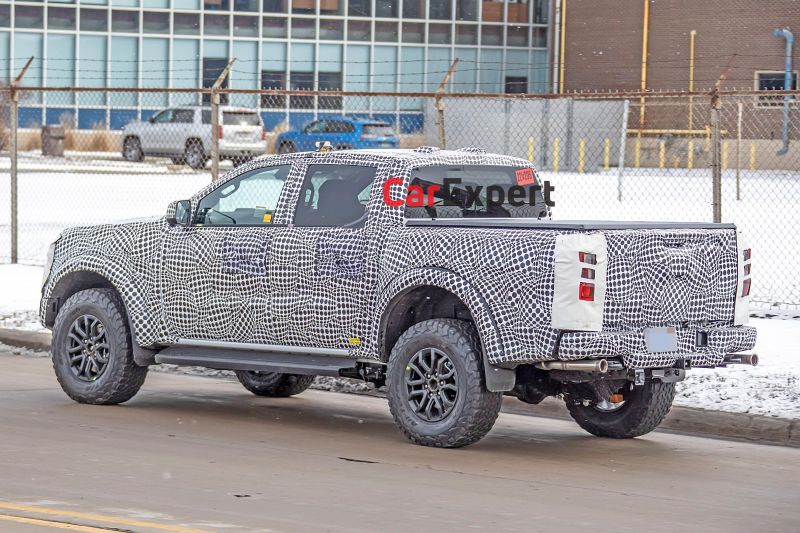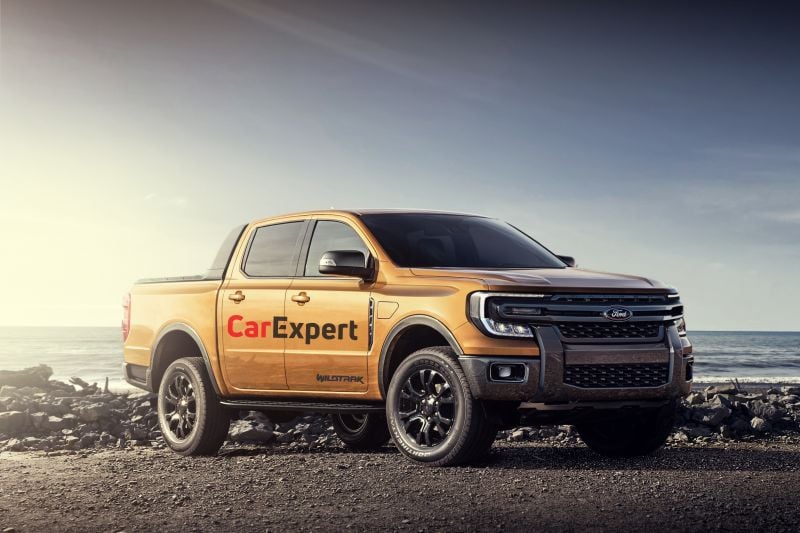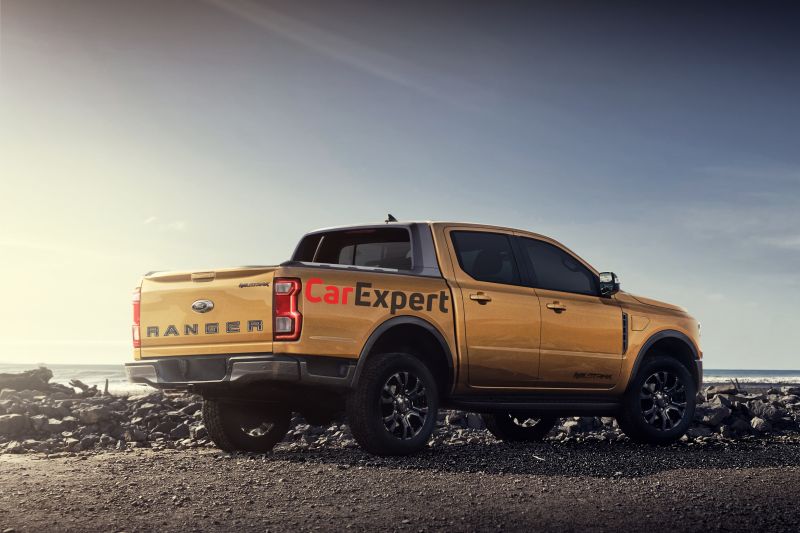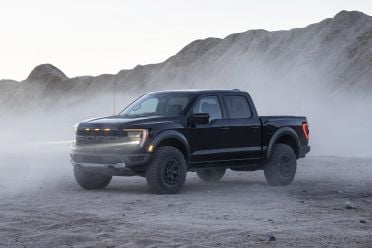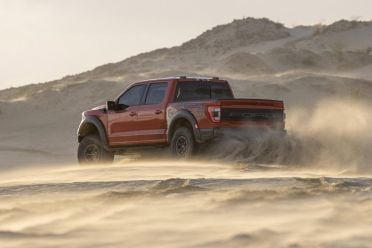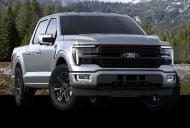The next Ford Ranger Raptor may be even more powerful than expected.
Ford Authority reports the Raptor will use a twin-turbocharged 3.0-litre V6 petrol engine mated to a 10-speed automatic transmission, a powertrain also used in the Ford Explorer and related Lincoln Aviator.
This engine is currently available in two states of tune: one with 272kW of power and 515Nm of torque, used in the Explorer Platinum, and another with 300kW and 563Nm used in the Explorer ST and Aviator.
The latter is up on the twin-turbocharged 2.7-litre V6 used in the rugged Bronco, related to the Ranger, which produces 231kW and 540Nm.
While Ford Australia is missing out on the Bronco, we expect the petrol-powered Ranger Raptor will come here as it’s been snapped testing in right-hand drive form.
The prototype is outfitted with BF Goodrich All-Terrain T/A KO2 tyres and wears a bold new front-end.
Those flared arches hide next-generation Fox Racing suspension including live valve technology, which is essentially marketing speak for adaptive damping.
The dampers are expected to work a little differently to conventional adaptive damping systems, with the ability to offer more travel for off-roading and rock crawling.
They’re also expected to feature a jump mode that braces the suspension for a hard impact, softening the blow for passengers.
We put together computer-generated images last year of what we expect the Raptor to look like, sans camouflage.
The front-end will feature a honeycomb grille with extensive use of LED lighting and potentially Matrix LED headlights.
A sliding rear window, currently available on North American Rangers, should also be available.
Diesel dominates the Ranger’s segment so Ford will still offer an oil-burner in the Ranger, though whether it’ll be offered in the Raptor isn’t clear.
CarExpert understands the next-generation car could launch with the same 2.0-litre four-cylinder twin-turbo diesel as the current model, and a 3.0-litre turbo-diesel V6 option borrowed from the larger F-150 pickup with 190kW and 600Nm.
The latter will be available with permanent all-wheel drive (similar to the Volkswagen Amarok) with a selectable low-range mode.
The current 3.2-litre five-cylinder turbo-diesel is expected to be axed.
The big news for the ‘regular’ Ranger range is the introduction of a plug-in hybrid to the line.
Expected to launch after the other powertrains, the plug-in hybrid will use a turbocharged 2.3-litre four-cylinder petrol engine.
It’s expected to produce 270kW of power and 680Nm of torque, with combined fuel economy of 3.0L/100km.
The new Ranger line-up is also expected to offer the brand’s SYNC4 infotainment system with a portrait-oriented, 12.8-inch infotainment screen.
Developed alongside the next-generation Volkswagen Amarok, the 2023 Ford Ranger is expected to launch late in 2022.
There’s still been extensive involvement from Australian engineers, who led development of the current Ranger. The new truck should also use an updated version of the current T6 platform.
Ford’s North American arm was late in getting the current T6 Ranger. It was introduced in the US in 2019, powered exclusively by a turbocharged 2.3-litre four-cylinder petrol engine.
While there are now diesel-powered F-150, Chevrolet Silverado, GMC Sierra and Ram 1500 pickup trucks, the only other diesels in the Ranger’s segment are under the bonnets of the Chevrolet Colorado and GMC Canyon twins.
Plans to finally introduce the Ranger Raptor to the US market are likely the impetus for Ford’s decision to employ a powerful, twin-turbocharged petrol engine in the Raptor, given the scarcity of high-performance diesels in that market.
It also gives the Ranger Raptor a closer tie with the original Raptor, the F-150 Raptor, which uses a twin-turbocharged 3.5-litre petrol V6 engine.




